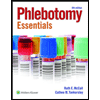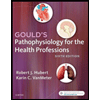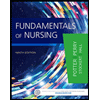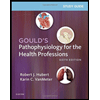
To discuss:
How do you think you would respond in a similar situation? Why?
Case summary:
Mrs. P is a single, 88-year-old woman, was hospitalized for cardiac problems. She has been in her beginning of dementia. She lives alone in a small home along with her cats. When she was ordered for the discharge, the nursing student worried about Mrs. P’s ability to live safely on her own. The nursing student suggested her about moving to a retirement community or long-term care facility. But Mrs. P refused those options. The nursing student was worried about her safety and reported to the charge nurse. The charge nurse replied that we can do nothing if the patient is not willing to explore the other options.
Explanation of Solution
In a similar situation, the nursing student could first determine the patient’s needs for independence and safety. The nursing student then would work with the social services in order to investigate the possible community support resources that are available for this patient where the patient could maintain her independence. The nursing student then might suggest certain options that are suitable to Mrs. P. The patient’s wish for being independent and the nursing student’s concern on the patient’s safety might be fulfilled by doing so.
To discuss:
What does this tell about yourself and about the adequacy of your skills for professional practice?
Case summary:
Mrs. P is a single, 88-year-old woman, was hospitalized for cardiac problems. She has been in her beginning of dementia. She lives alone in a small home along with her cats. When she was ordered for the discharge, the nursing student worried about Mrs. P’s ability to live safely on her own. The nursing student suggested her about moving to a retirement community or long-term care facility. But Mrs. P refused those options. The nursing student was worried about her safety and reported to the charge nurse. The charge nurse replied that we can do nothing if the patient is not willing to explore the other options.
Explanation of Solution
The nursing student was found to be still in the learning phase and developing the skills for professional practice. On the basis of the answer provided in the similar situation, the nursing student seems to have adequate skills for the professional practice.
To discuss:
Can you think of other ways to respond?
Case summary:
Mrs. P is a single, 88-year-old woman, was hospitalized for cardiac problems. She has been in her beginning of dementia. She lives alone in a small home along with her cats. When she was ordered for the discharge, the nursing student worried about Mrs. P’s ability to live safely on her own. The nursing student suggested her about moving to a retirement community or long-term care facility. But Mrs. P refused those options. The nursing student was worried about her safety and reported to the charge nurse. The charge nurse replied that we can do nothing if the patient is not willing to explore the other options.
Explanation of Solution
The nursing student could seek counseling from the instructor. The nursing student could explore other resources and obligations of the caregivers to determine the realistic options for this patient.
To discuss:
What could the nursing student have done differently?
Case summary:
Mrs. P is a single, 88-year-old woman, was hospitalized for cardiac problems. She has been in her beginning of dementia. She lives alone in a small home along with her cats. When she was ordered for the discharge, the nursing student worried about Mrs. P’s ability to live safely on her own. The nursing student suggested her about moving to a retirement community or long-term care facility. But Mrs. P refused those options. The nursing student was worried about her safety and reported to the charge nurse. The charge nurse replied that we can do nothing if the patient is not willing to explore the other options.
Explanation of Solution
The nursing student might have convinced Mrs. P to choose any of the options without disturbing her autonomy. The nursing student might explain the disadvantages of being alone. The nursing student might suggest more options to the patient rather than the retirement community or long-term care facility.
To discuss:
What skills, knowledge, and attitude do you need to develop to continuously improve quality and safety when caring for patients like Mrs. P?
Case summary:
Mrs. P is a single, 88-year-old woman, was hospitalized for cardiac problems. She has been in her beginning of dementia. She lives alone in a small home along with her cats. When she was ordered for the discharge, the nursing student worried about Mrs. P’s ability to live safely on her own. The nursing student suggested her about moving to a retirement community or long-term care facility. But Mrs. P refused those options. The nursing student was worried about her safety and reported to the charge nurse. The charge nurse replied that we can do nothing if the patient is not willing to explore the other options.
Explanation of Solution
The nursing student should develop the knowledge of physiologic changes that are associated with aging. This could help in developing an appropriate plan care for this patient after her discharge. The nursing student should gain information about all the possible community resources that are available for this kind of patients. The nursing student should improve her interpersonal communication skills and increase knowledge in order to support services for aging adults.
Want to see more full solutions like this?
Chapter 23 Solutions
FUND.OF NURSING BUNDLE >BI<
- 69. 70. 71. 72. 73. 74.arrow_forward63. 64. 65. Rhythm: P wave: QRS Complex: Rate: PRI: Interpretation: Rhythm: P wave: QRS Complex: 66. 67. 68. Rhythm: P wave: QRS Complex: Rhythm: P wave: QRS Complex: Rate: PRI: Interpretation: Rate: PRI: Interpretation: Rate: PRI: Interpretation:arrow_forward59. 57. 60. 62. 55. سلسلہ ་་་་arrow_forward
- • Define the first stage of labour. • Describe the physiology of the first stage of labour. • Enumerate any four (4) potential complications during puerperium and highlight key measures to manage these complications.arrow_forward• Define obstetric emergencies and state and briefly explain any two (2) maternal, foetal, and obstetric complications that require immediate intervention. • Explain how mental health services can be effectively integrated into maternal and child health, viz-a-viz early childhood development. • Enumerate any four (4) foetal malpresentations in pregnancy and briefly explain their implication in labour while also highlighting their causes and possible complications.arrow_forward• Briefly highlight the physiological changes in pregnancy in relation to cardiovascular and endocrine systems, as well as the uterus and the skin. • Discuss the current antenatal care approach for pregnant women and provide the highlight of activities conducted during woman’s antenatal visit, clearly describing the steps needed for successful antenatal care. • Enumerate any three (3) abnormalities related to placental development and their implications to pregnancy or childbirth.arrow_forward
- 58 64. Rhythm: Clues: Rhythm: Clues: 62 Rhythm QRS Complex Rates PRI Interpretation Rhythm: P wave QRS Complex Rate PRI Interpretation Rhythm: Clues: Rhythm P wave: QRS Complex Rate PRI Interpretation: Rhythm: P wave: QRS Complex: Rate: Interpretation: 67 Rhythm: P wave: QRS Complex: Rate: PRI Interpretation: Rhythm: P wave: QRS Complex: Rate: PRI Interpretation: 68 Rhythm P waves QRS Complex Rate PRI Interpretation Rhythm P wave QRS Complex Rhythm: P wave QRS Complex: Rate PRI Interpretations Rate PRI Interpretationarrow_forward51. 52. 53. Rhythm: Clues: Rhythm: Clues: Rhythm: Clues:arrow_forwardRegularity- Rate- P waves- PRI- QRS- Interpretation- atrial dysrthmia,junctional dysrthymia,and ventricular rhythm,heart blocks,normal sinus,PVCarrow_forward
- normal sinus,atrial dysrthmia,junctional dysrthymia,and ventricular rhythm,heart blocks,PVCarrow_forwardnormal sinus,atrial dysrthmia,junctional dysrthymia,and ventricular rhythm,heart blocksarrow_forwardA 40-year-old male farmer was rushed to an ER with complaints of fever, abdominal pain/tenderness, nausea and vomiting. Clinical examination and investigations revealed diagnosis of typhoid perforation and he was booked for exploratory laparotomy. Explain in detail the pre - operative care of this patient.arrow_forward
 Phlebotomy EssentialsNursingISBN:9781451194524Author:Ruth McCall, Cathee M. Tankersley MT(ASCP)Publisher:JONES+BARTLETT PUBLISHERS, INC.
Phlebotomy EssentialsNursingISBN:9781451194524Author:Ruth McCall, Cathee M. Tankersley MT(ASCP)Publisher:JONES+BARTLETT PUBLISHERS, INC. Gould's Pathophysiology for the Health Profession...NursingISBN:9780323414425Author:Robert J Hubert BSPublisher:Saunders
Gould's Pathophysiology for the Health Profession...NursingISBN:9780323414425Author:Robert J Hubert BSPublisher:Saunders Fundamentals Of NursingNursingISBN:9781496362179Author:Taylor, Carol (carol R.), LYNN, Pamela (pamela Barbara), Bartlett, Jennifer L.Publisher:Wolters Kluwer,
Fundamentals Of NursingNursingISBN:9781496362179Author:Taylor, Carol (carol R.), LYNN, Pamela (pamela Barbara), Bartlett, Jennifer L.Publisher:Wolters Kluwer, Fundamentals of Nursing, 9eNursingISBN:9780323327404Author:Patricia A. Potter RN MSN PhD FAAN, Anne Griffin Perry RN EdD FAAN, Patricia Stockert RN BSN MS PhD, Amy Hall RN BSN MS PhD CNEPublisher:Elsevier Science
Fundamentals of Nursing, 9eNursingISBN:9780323327404Author:Patricia A. Potter RN MSN PhD FAAN, Anne Griffin Perry RN EdD FAAN, Patricia Stockert RN BSN MS PhD, Amy Hall RN BSN MS PhD CNEPublisher:Elsevier Science Study Guide for Gould's Pathophysiology for the H...NursingISBN:9780323414142Author:Hubert BS, Robert J; VanMeter PhD, Karin C.Publisher:Saunders
Study Guide for Gould's Pathophysiology for the H...NursingISBN:9780323414142Author:Hubert BS, Robert J; VanMeter PhD, Karin C.Publisher:Saunders Issues and Ethics in the Helping Professions (Min...NursingISBN:9781337406291Author:Gerald Corey, Marianne Schneider Corey, Cindy CoreyPublisher:Cengage Learning
Issues and Ethics in the Helping Professions (Min...NursingISBN:9781337406291Author:Gerald Corey, Marianne Schneider Corey, Cindy CoreyPublisher:Cengage Learning





